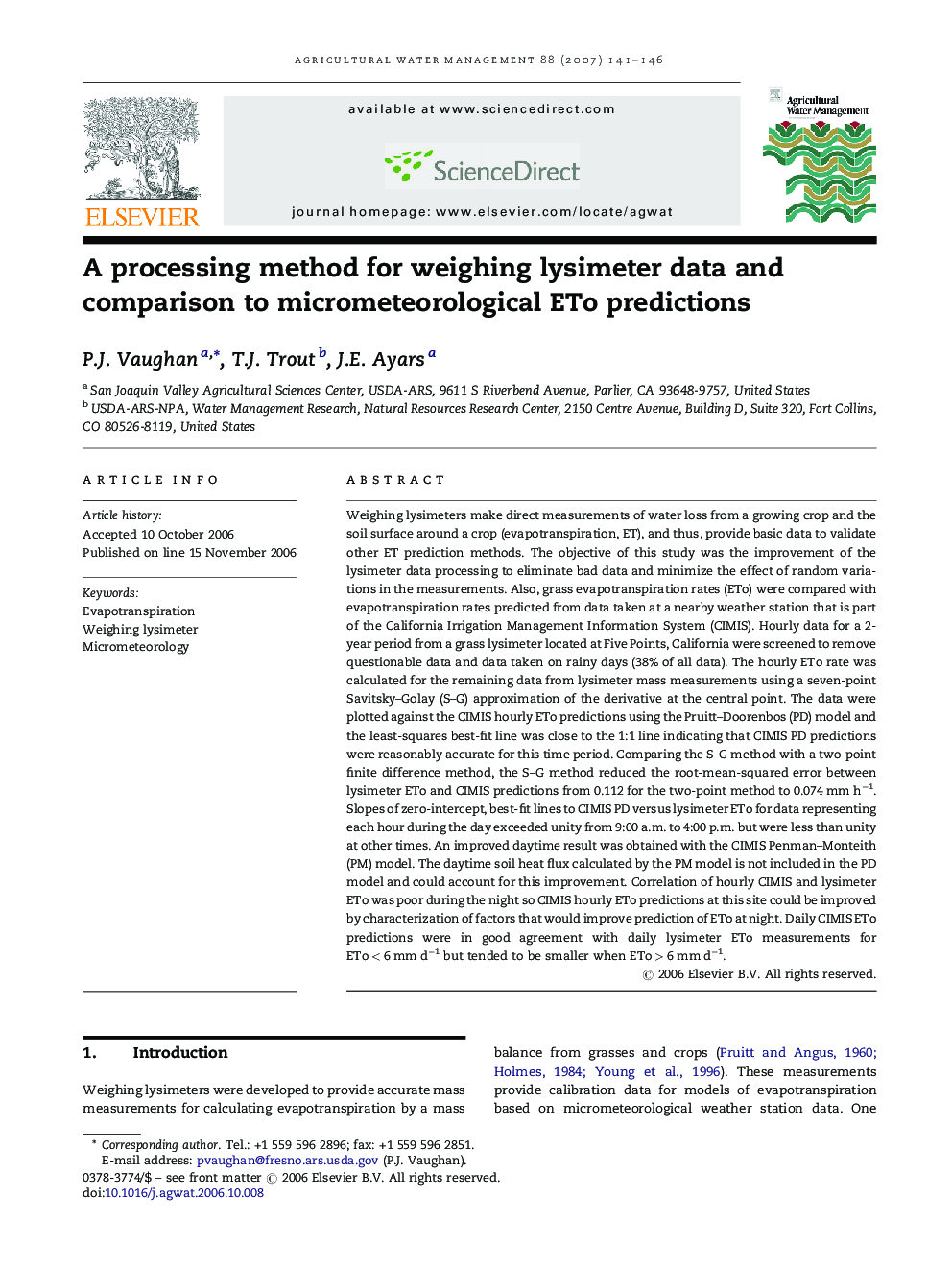| کد مقاله | کد نشریه | سال انتشار | مقاله انگلیسی | نسخه تمام متن |
|---|---|---|---|---|
| 4480034 | 1622985 | 2007 | 6 صفحه PDF | دانلود رایگان |

Weighing lysimeters make direct measurements of water loss from a growing crop and the soil surface around a crop (evapotranspiration, ET), and thus, provide basic data to validate other ET prediction methods. The objective of this study was the improvement of the lysimeter data processing to eliminate bad data and minimize the effect of random variations in the measurements. Also, grass evapotranspiration rates (ETo) were compared with evapotranspiration rates predicted from data taken at a nearby weather station that is part of the California Irrigation Management Information System (CIMIS). Hourly data for a 2-year period from a grass lysimeter located at Five Points, California were screened to remove questionable data and data taken on rainy days (38% of all data). The hourly ETo rate was calculated for the remaining data from lysimeter mass measurements using a seven-point Savitsky–Golay (S–G) approximation of the derivative at the central point. The data were plotted against the CIMIS hourly ETo predictions using the Pruitt–Doorenbos (PD) model and the least-squares best-fit line was close to the 1:1 line indicating that CIMIS PD predictions were reasonably accurate for this time period. Comparing the S–G method with a two-point finite difference method, the S–G method reduced the root-mean-squared error between lysimeter ETo and CIMIS predictions from 0.112 for the two-point method to 0.074 mm h−1. Slopes of zero-intercept, best-fit lines to CIMIS PD versus lysimeter ETo for data representing each hour during the day exceeded unity from 9:00 a.m. to 4:00 p.m. but were less than unity at other times. An improved daytime result was obtained with the CIMIS Penman–Monteith (PM) model. The daytime soil heat flux calculated by the PM model is not included in the PD model and could account for this improvement. Correlation of hourly CIMIS and lysimeter ETo was poor during the night so CIMIS hourly ETo predictions at this site could be improved by characterization of factors that would improve prediction of ETo at night. Daily CIMIS ETo predictions were in good agreement with daily lysimeter ETo measurements for ETo < 6 mm d−1 but tended to be smaller when ETo > 6 mm d−1.
Journal: Agricultural Water Management - Volume 88, Issues 1–3, 16 March 2007, Pages 141–146